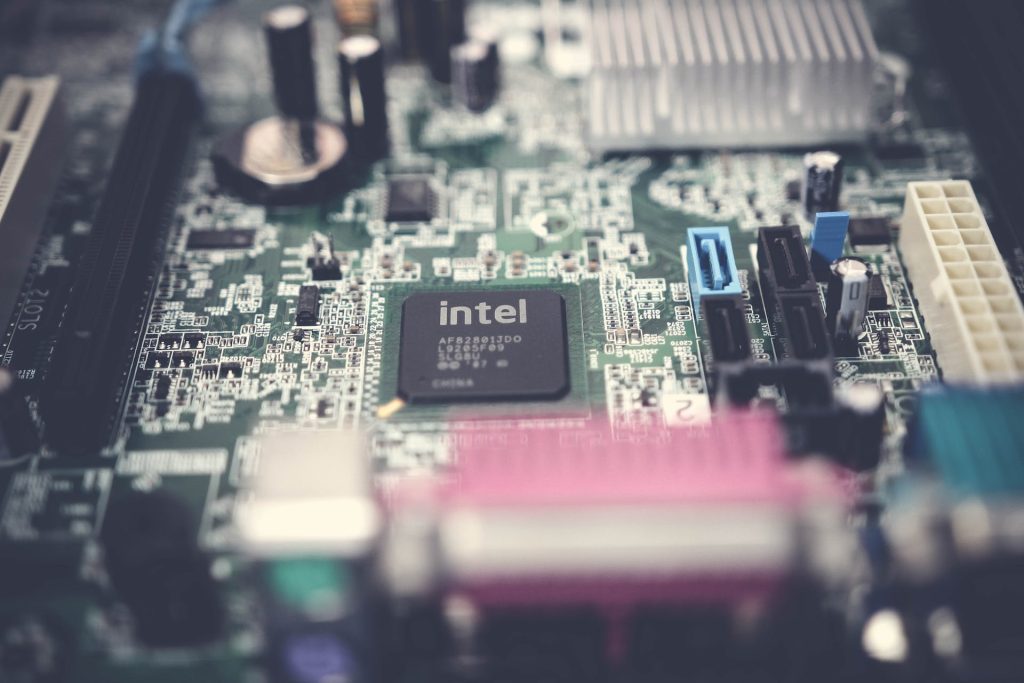
Intel’s 14th Gen Processors Leak Out Thanks To MSI
Table of Contents
In the fast-paced world of technology, innovation and secrecy go hand in hand. Companies like Intel are constantly developing cutting-edge technology to push the boundaries of what’s possible in computing. It’s no surprise that leaks and rumors about upcoming products generate immense excitement within the tech community. Recently, Intel 14th Gen processors have come under the spotlight, thanks to a leak facilitated by MSI (Micro-Star International), a well-known manufacturer of computer hardware. This article will delve into the details of this leak and what it means for the future of Intel’s processors.
A Brief Overview of Intel’s Processor Generations
Intel is renowned for its line of processors, which have been instrumental in powering personal computers, workstations, and servers for decades. Each new processor generation brings improvements in performance, power efficiency, and features. The leak of Intel’s 14th Gen processors has garnered considerable attention due to the potential advancements they may bring to the table. To understand the significance of this leak, we need to take a closer look at the progression of Intel’s processor generations.
- First Generation (2006-2008): Intel introduced its Core microarchitecture with the Core 2 Duo processors. These processors marked a significant leap in performance and energy efficiency.
- Second Generation (2011): The Sandy Bridge processors, based on the 32nm process, offered a notable increase in performance and introduced integrated graphics.
- Third Generation (2012): Ivy Bridge processors continued to refine the architecture, further improving performance and efficiency.
- Fourth Generation (2013): Haswell processors introduced a more efficient 22nm process and improved integrated graphics.
- Fifth Generation (2015): Broadwell processors, built on a 14nm process, provided significant power efficiency improvements.
- Sixth Generation (2015): Skylake processors further refined the 14nm process and brought new features such as DDR4 support.
- Seventh Generation (2016): Kaby Lake processors offered better performance and power efficiency.
- Eighth Generation (2017): Coffee Lake processors brought more cores to consumer CPUs, boosting multi-core performance.
- Ninth Generation (2018): Whiskey Lake and Coffee Lake Refresh processors continued the trend of higher core counts and improved clock speeds.
- Tenth Generation (2020): Comet Lake processors introduced the first desktop CPUs with up to 10 cores.
- Eleventh Generation (2020): Tiger Lake processors marked a significant leap in integrated graphics and power efficiency.
- Twelfth Generation (2021): Alder Lake processors introduced a new hybrid architecture, combining high-performance and high-efficiency cores.
- Thirteenth Generation (2021): Raptor Lake processors continued to refine the Alder Lake architecture and brought improvements in performance.
With this historical context, it’s evident that Intel’s processor generations have consistently strived to offer better performance, efficiency, and features. The leak of the 14th Gen processors is expected to continue this trend and possibly set new standards in the world of computing.
The Leak: A Glimpse into Intel’s 14th Gen Processors
The leak of Intel’s 14th Gen processors was facilitated by MSI, a renowned PCB Manufacturer of motherboards, graphics cards, and other computer hardware components. In October 2022, an MSI employee accidentally posted a product compatibility document on their website, which included details about upcoming Intel processors. This document revealed key information about the 14th Gen processors, codenamed “Meteor Lake.”
Meteor Lake processors are expected to be a significant step forward for Intel, following the innovation introduced in the Alder Lake processors. The leak included several noteworthy details:
- Architecture: Meteor Lake will use the 7nm process technology, a substantial improvement over the 10nm process used in Alder Lake. Smaller transistor sizes typically lead to better performance and energy efficiency.
- Cores and Threads: The leak suggested that Meteor Lake processors could offer up to 24 cores and 48 threads, indicating a significant increase in multi-core capabilities. This is especially exciting for users who demand high-performance computing.
- Graphics: Meteor Lake processors will feature Intel’s Xe graphics architecture, which promises better integrated graphics performance. This is a crucial aspect for laptops and desktops that rely on integrated graphics.
- DDR5 and PCIe 5.0: The compatibility document also mentioned support for DDR5 memory and PCIe 5.0, which will enhance system memory bandwidth and data transfer speeds, respectively.
- Socket Compatibility: Meteor Lake processors are expected to use the LGA 1700 socket, indicating that users may need to upgrade their motherboards to take advantage of these processors.
- Release Date: The leak didn’t provide specific release dates, but it did suggest that Meteor Lake processors could be expected sometime in 2023.
Implications of the Leak
The leak of Intel’s 14th Gen processors has several implications for the computing industry, Intel, and consumers alike.
- Competition with AMD: Intel has faced stiff competition from AMD in recent years, with AMD’s Ryzen processors gaining popularity for their high core counts and competitive performance. The leak indicates that Intel is gearing up to reassert its dominance in the processor market by offering even more powerful processors with the Meteor Lake lineup.
- Technological Advancements: The move to a 7nm process and the inclusion of DDR5 memory and PCIe 5.0 support signify Intel’s commitment to pushing the boundaries of technology. These advancements will have a positive impact on computing performance, energy efficiency, and connectivity.
- Integrated Graphics: The improved Xe graphics architecture in Meteor Lake processors will be a significant boost for laptops and entry-level desktops, eliminating the need for discrete graphics cards in many scenarios.
- Upgrade Considerations: Consumers who are eager to adopt Meteor Lake processors may need to consider upgrading their motherboards to support the LGA 1700 socket. This adds an additional cost to the upgrade path, but the potential performance gains might make it worthwhile.
- Timing and Competition: The leak also indicates that Intel is working diligently to release Meteor Lake processors in 2023. This timing aligns with AMD’s potential releases, setting the stage for an exciting rivalry in the high-performance processor market.
- Ecosystem Impact: Meteor Lake’s arrival will also impact the broader ecosystem, with motherboard manufacturers, memory suppliers, and other hardware companies gearing up to support these processors. This will foster innovation and potentially lead to more powerful and efficient systems.
The Future of Computing
As Intel’s 14th Gen processors, codenamed Meteor Lake, make their way into the market, they are poised to redefine the standards of high-performance computing. The leak facilitated by MSI has provided an exciting glimpse into what’s to come, with a focus on the 7nm process technology, increased core and thread counts, enhanced integrated graphics, and support for the latest memory and connectivity standards.
This leak not only generates anticipation among tech enthusiasts but also underscores the continuous race for innovation between Intel and its competitors, notably AMD. The processor market is in a state of rapid evolution, with each new generation bringing unprecedented levels of performance, energy efficiency, and feature sets.
The leak of Intel 14th Gen processors is a testament to the ever-evolving nature of technology and the excitement it generates within the tech community. It’s a reminder that the future of computing is filled with promise, and as consumers, we can look forward to even more powerful and efficient systems that will drive innovation and productivity to new heights. Whether you’re a professional requiring high-performance computing or a casual user, the advancements brought by Intel’s Meteor Lake processors will likely have a positive impact on your computing experience. Stay tuned for further updates as we approach the official release of these groundbreaking processors in 2023.

